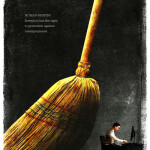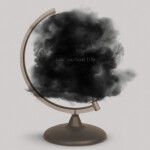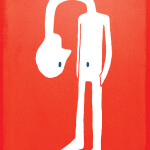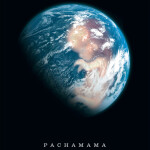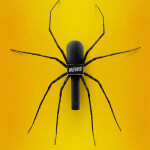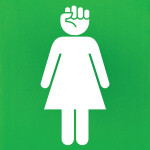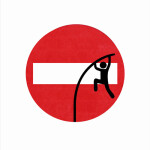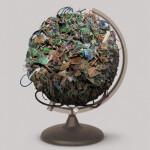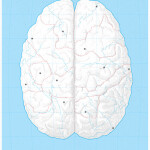With a fist held high and a passion for Social Justice, our new Poster Master is a designer very close to our hearts, the talented Coco Cerrella.
Coco was born and lives in Buenos Aires, Argentina. He studied Graphic Design at the Buenos Aires University (UBA-FADU) and started teaching there in 2007, as well as giving workshops and courses on Identity Design and Social Poster for students and graduates. Outside the academic realm, Coco runs two workshops in Graphic Design at the Devoto prison, under the Prison Education Program, UBA XXII. His work was been recognized by numerous organizations and exhibited in 36 countries and many cities. In 2014 he was a juror in international design competitions Poster For Tomorrow (Posters on Human Rights) and Best Brand Awards (Logos) and a speaker at national and international events about Design and TEDxRosario. He has designed projects for American Express, Barcelona Football Club, The Coca-Cola Company, Danone, Ministry of Environment of the Nation (Argentina), Executing Bicentennial Unit (Arg.), among others. Since 2012 he coordinates the Department of Communication of the Civil Asociation Engineering Without Borders Argentina, where he uses graphic design to build bridges and a more equitable world.
We asked Coco our “Poster Poster Questions” and these are his answers:
1. What does the poster mean to you and why do you design posters?
The poster is, by excellence, the communication device where a lot of knowledge regarding visual communication comes into play and it requires a synthesis that can be hard to accomplish. Personally, the poster is an opportunity to connect with an ‘other’ and with luck, awaken a response in them. This is the ultimate objective that I try to reach. I also like to imagine the social poster as a window. Not just a paper glued to the wall, but a window where one can see far beyond from what is printed. When one looks at historic posters there is a first image or message, but there are also different levels of communications. The poster has different timings in its reading. The first is this initial impact that makes us stop and look at it.
Secondly, when we understand what they want to tell us or at least we interpret it. And after, a good poster has other channels of information that we might or might not see, that do not communicate the main message but, if discovered, they add a great richness to the message. Mainly, for me, it is an opportunity to change a little this broken world we live in. Even if it is simply and nonetheless by awakening a reflection about a particular social problem. If we can do this, for me the mission has been accomplished.
2. What would you say makes a good poster?
There are many factors that make a good poster. The first perhaps has to do with the technical aspect. Making sure the typography is tight, the visual language, the resources, the morphology to be able to accomplish an impact from a distance. But after this, the truth is as a contest juror I’ve seen thousands and thousands of posters that are technically flawless but lack what for me is the most important, which is authenticity. To see that the person had something relevant and authentic to say. You can really tell when you look at a poster if it was created to showcase the technical side rather than to say something, and in the social poster discipline, this is a key element. In my most loved project that I’ve been doing for almost 8 years, which is teaching social design in prisons, I’ve seen impactful posters made with pencil and paper, with bad technique and even with disuse, but authentic. When the message is authentic and it is embodied from a truth of the messenger, it stays embedded in your memory. Therefore, I think a good poster has to mainly have a technical character of course, but beyond that, there’s the authenticity, the perdurability of that idea in your head, and I think the best thing that can happen is that we make a poster and someone else looks at it and likes it so much they want to tear it from the wall to take it with them and keep it or put it on their wall. That is the best.
3. What do you think is the role of the poster on the world today?
The role of poster today, I don’t think it has changed too much. Even though, if we think that posters help us to point out things that are not ok, speaking specifically about social posters, as the world continues to break, the poster will become increasingly necessary. What might change and does it naturally is technology. A few years ago, it was impossible to think about an animated or augmented reality poster or even the social networks that open the door for something that before we thought about in large format, and now we have to think that it also works in small size and becomes viral. With the same logic. A simple and strong symbol that synthesizes a complex problematic, the medium changes but the role stays the same. And, probably, this role will become increasingly necessary
4. What is your typical design process for making a poster?
Throughout the years I have developed a personal method that has several steps but that I can summarize. Mainly, it Starts with a question. What do I want to say about a certain topic? This implies research that is not only external, about a particular topic, but inwards. What outrages me? What distresses me? Where do I get angry about a specific topic? This is essential for social posters in order to say something real; not what is supposed to be said, but what one has to contribute about a certain topic. This stage can take me a long time. Even more than to sit down and make it. Because, there can be a lot of time employed to make a poster, but If the substance of this poster, that is the ‘What’ of what is being said is not relevant, then for me the poster is meaningless. Afterward, I try to sum up this ‘What’ in a short sentence, to reduce it, and translate it to symbols. I always carry a pencil and paper with me that I use to be able to sketch. I don’t believe in epiphanies or immediate inspiration, even though it can happen I believe in the ass in the chair. In working. But working from the point of view of the search for the best way to say something. I sketch, I carry my notebook, so I sketch while I’m taking the public transit or standing in line for the bank. And the notebook is not only useful to draw an idea, but to avoid certain situations, like the hell that is being in a bank. And once I see that the idea works, I get feedback from strangers. The person serving me a coffee at a bar or the one sitting next to me in the public transit. It doesn’t matter. I ask for permission and ask them: What do you think about this? Can you understand it? And I think this is the best way. If the majority says something close to what I was trying to say, then I take it as a sign that I can now sit down in my computer to complete the final work. Lastly, in these steps, there is something very important for me, which is to ask myself if I would sign this piece. Ask myself again if am convinced of this ‘What’. Because with a poster, one might be not only provoking reflection but offending someone with an idea. This might not be bad if in this offense you are pinching this person to awaken a reflection, a new idea, a change in behavior in someone. But it’s important that if you are going to cause this offense you are also willing to sit down and discuss it. Meaning, am I willing to sign this idea? Am I willing to attach my name to it? And this for me is key.
5. If you could choose a poster in history as your favorite, which one would it be and why?
It’s hard to say a favorite poster. I am an admirer of the Russian Poster Movement. I find what they did during the 20th century very impressive. And the last poster that strongly impacted me was very recently a poster from Finish designer Kari Pippo. A poster that says ‘Rich, Poor’, and for me it synthesizes what the perfect poster is. Because it’s beautiful, simple, deep, and has a lot of wit. With lots of subtlety. So much, that I wrote to him. I sat down and searched him up and wrote to thank him. And there is a lot of talent in Latin America and here in Argentina as well. Poster artists like Santi Pozzi in the cultural sector, Martín Gorricho, Colectivo Onaire in the social side, there are really spectacular things.
6. What advice would you give to new designers who might want to become poster designers?
I am convinced because I have been able to prove this empirically through my years of teaching in prisons, that through design we can build a world that is a little bit better. With this conviction, I think those that are beginning must be, first of all, authentic. This thing I was discussing earlier about not designing to ingratiate yourself with colleagues or designers. We shouldn’t design for other designers; we should design for people in general. The search for the authenticity of the message is key. Dare to show yourself. There will always be someone who won’t like what we do. There will always be someone who will criticize us. Starting from that basis, we must do what we believe we have to do. Because if we didn’t do it, there would still be someone who will criticize us. So, it’s better to be criticized for who we are than for who we aren’t. Lastly, and this goes directly for the students, I would like to tell you that I didn’t do a single good poster during the six years that I was a student, really. A lot of what we are learning are pieces that fall into place with time. So, don’t get discouraged if you get bad grades if you don’t accomplish what you thought you would. I think persistence and tenacity are important. And understand that learning is a process and not a result. I think not much more. Finally, I would like to close with something that changed my life, which is to ask myself why and what do I design for.

